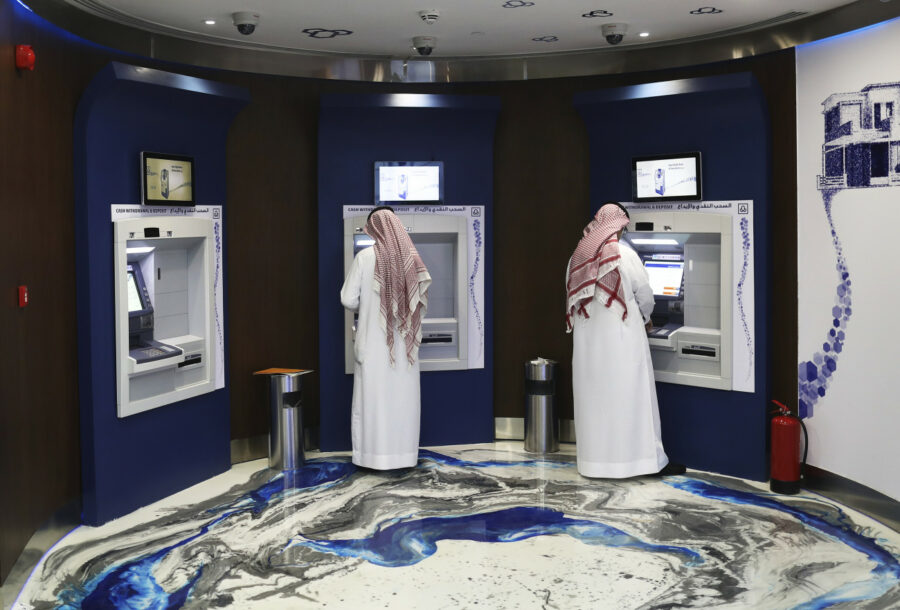The profitability metrics of the top 10 banks in Saudi witnessed an improvement with post-Covid-19 economic recovery.
According to a report commissioned by legal professional services firm Alvarez & Marsal, the aggregate loans and advances (L&A) grew 14.2 percent year-over-year (YoY) as all the top ten banks reported a growth; however, deposit mobilization slowed down in FY’21.
Titled KSA Banking Pulse for FY 2021, the report notes that the growth in net income (15.5 percent YoY) is mainly attributed to higher operating income (+3.5 percent YoY) along with lower impairments (-28.9 percent YoY).
The net interest margin (NIM) declined by 18 bps YoY to 2.9 percent in FY’21 as interest rates fell to a 15-year low. Despite the lower NIM, the banks’ increased profitability demonstrates higher efficiency across the sector.
Despite the lower NIM, the banks’ increased profitability demonstrates higher efficiency across the sector.
The aggregate L&A increased at a higher rate of 14.2 percent YoY in FY’21 as compared to 12.8 percent YoY in FY’20. This was driven by robust performance in the mortgage segment across the banking sector.
The aggregate retail mortgage across the Saudi banking sector increased by 47.8 percent to 413 billion Saudi riyals.
The deposit growth was slower at 7.2 percent YoY as compared to 9.2 percent YoY in FY’20.
Consequently, the aggregate loan-to-deposit ratio (LDR) rose to 91.5 percent from 86.0 percent, highlighting the higher consumer spending as the economy continues its post-pandemic recovery.
Total operating income increased by 3.5 percent YoY. The growth was primarily due to higher net interest income (+4.0 percent YoY), resulting from higher cost efficiencies during the low-interest rate environment and net fee & commission income (+9.9 percent YoY). The growth was partially negated due to lower currency translation-related losses and lower operating income (-8.3 percent YoY).
Aggregate net interest margin (NIM) declined by 18 bps YoY to 2.9 percent in FY’21, largely on the back of the low-interest rate environment. Saudi’s Central Bank had previously cut repo rates by 125 bps in March ’20 to c.s 1.0 percent, the lowest interest rates since 2007, to support the economy during the pandemic. The aggregate yield on credit declined by 74 bps YoY, while the cost of funds fell by 23 bps YoY.
Cost-to-income (C/I) ratio decreased by 0.2 percent points YoY to 35.2 percent, as banks’ administrative expenses increased at a slower pace. The aggregate operating income (+3.5 percent YoY) increased at a higher rate compared to operating expenses (+2.9 percent YoY).
Total impairments decreased by 28.9 percent YoY to 12.4 billion Saudi riyals, as banks reported lower provisions, alongside the economic recovery, due to higher consumer spending, increasing oil prices and infrastructure spending. Consequently, the cost of risk increased by 39 bps YoY to 0.7 percent
Aggregate net profit improved by 15.5 percent YoY, due to higher operating profit and decreased provisions. This resulted in an increase in profitability ratios such as Return on Equity (RoE) and Return on Assets (RoA) to 11.4 percent and 1.7 percent from 10.9 percent and 1.6 percent, respectively.
Saudi’s10 largest listed banks analyzed in A&M’s KSA Banking Pulse are Saudi National Bank (SNB), Al Rajhi Bank, Riyad Bank (RIBL), Saudi British Bank (SABB), Banque Saudi Fransi (BSF), Arab National Bank (ANB), Alinma Bank, Bank Albilad (BALB), Saudi Investment Bank (SIB) and Bank Aljazira (BJAZ).








